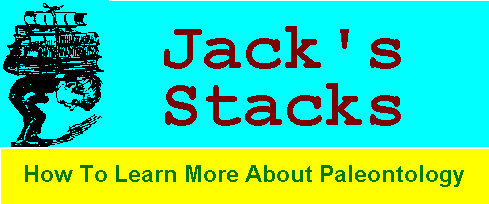
Early in 1994 Dino Fest was held in Indianapolis. If I've gotten my facts straight, this event was sponsored by The Paleontological Society and Indiana University - Purdue University at Indianapolis. The Paleontological Society has subsequently published a 500 page book containing the proceedings of this conference as their Special Publication No. 7. The book can be ordered from: Carnegie Museum of Natural History, Attn: Paleontological Society Special Publications, 4400 Forbes Ave., Pittsburgh, PA 15213 - checks to The Paleontological Society for $30.00 plus $2.00 shipping.
Dino Fest was a conference aimed at the general public to help convey current accurate information to the public concerning all areas of dinosaur science. Speakers at the conference were all scientists who are currently involved in the study of these creatures, their world, their demise, and what their story can tell us of our own world.
The Dino Fest publication is organized into a total of thirty- four papers. Please note that I did not call these chapters. Indeed, each author presents his subject in the form of a scientific paper with diagrams, charts, and reference lists. Don't panic at this point, remember the conference and this publication are intended for the general public. Some papers are more technical than others but not to the point they would be for a straight professional audience. The only paper I had trouble with concerned the plants that populated the world of the dinosaurs; I know little about plant fossils and their names meant little to me.
The thirty-four papers are organized into five main subsections: Thinking About Dinosaurs: Past, Present, and Future; Adaptations and Behavior; Bring 'Em Back Alive; The Dinosaur World; and Extinctions. Without listing each individual paper, I will try to give you an idea of topics covered in each section.
Thinking About Dinosaurs: Past, Present, and Future. The eight papers in this section deal with a number of general topics. Early historic reconstructions when dinosaurs were first discovered as well as reconstruction mistakes made in the late 1800's are covered. The latter involved sloppy work by one of the most noted dinosaur paleontologists of the time and took over sixty years to correct. Other topics of interest include where dinosaurs fit in the history of life on earth, amateur and commercial collecting, and education.
Adaptations and Behavior. This section contains thirteen papers covering many aspects of how dinosaurs lived. Three deal with Tyrannosaurus: The fossil evidence seems to indicate a size difference between the sexes; John Horner evaluates T. rex as a predator or a scavenger; and implications of tooth wear. John Ostrom describes Deinonychus as the ultimate killing machine with fossil evidence of pack hunting. At least five papers deal in differing ways with the warm blood - cold blood debate and pretty well show that scientists still can not agree on this one. One paper discusses paleopathology and what can be concluded about dinosaurs from bone growth abnormalities. Sure to be a favorite is the paper by Karen Chin on fossil dinosaur dung.
Bring 'Em Back Alive. This four paper section discusses amber, fossil DNA, and could Jurassic Park come true some day.
The Dinosaur World. Another four paper section which contains the aforementioned plant paper. The other papers were much more to my liking. Don Wolberg presents his work on an area he is studying in New Mexico. Philip Currie discusses the Chinese- Canadian project. John Long has an interesting paper showing dinosaurs in the cold polar Cretaceous of Australia. In one way or another these all delve into dinosaur habitats.
Extinctions. The last five paper section was most interesting in that much of what we hear through mass media isn't exactly what these scientists agree with. It appears that they pretty much agree that a big extraterrestrial body impacted the earth at the end of the Cretaceous, but they don't agree on what effect if any it had on the mass extinction at that time. One scientist favoring volcanism presents his view. Others question whether the dinosaurs demise was a part of the mass extinction or whether they were already dying off prior to the extinction event. Some even question if there was an instantaneous mass extinction or if the whole event was more gradual.
The Dino Fest publication will provide you with a single source of the latest information on dinosaurs. Probably one of the more interesting aspects is the presentation of papers on both sides of controversial issues. This is well worth the consideration of all you dinosaur enthusiasts.
Dino Fest is being held again in April of 1996 if anyone is interested. The event will be held at Arizona State University.